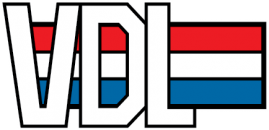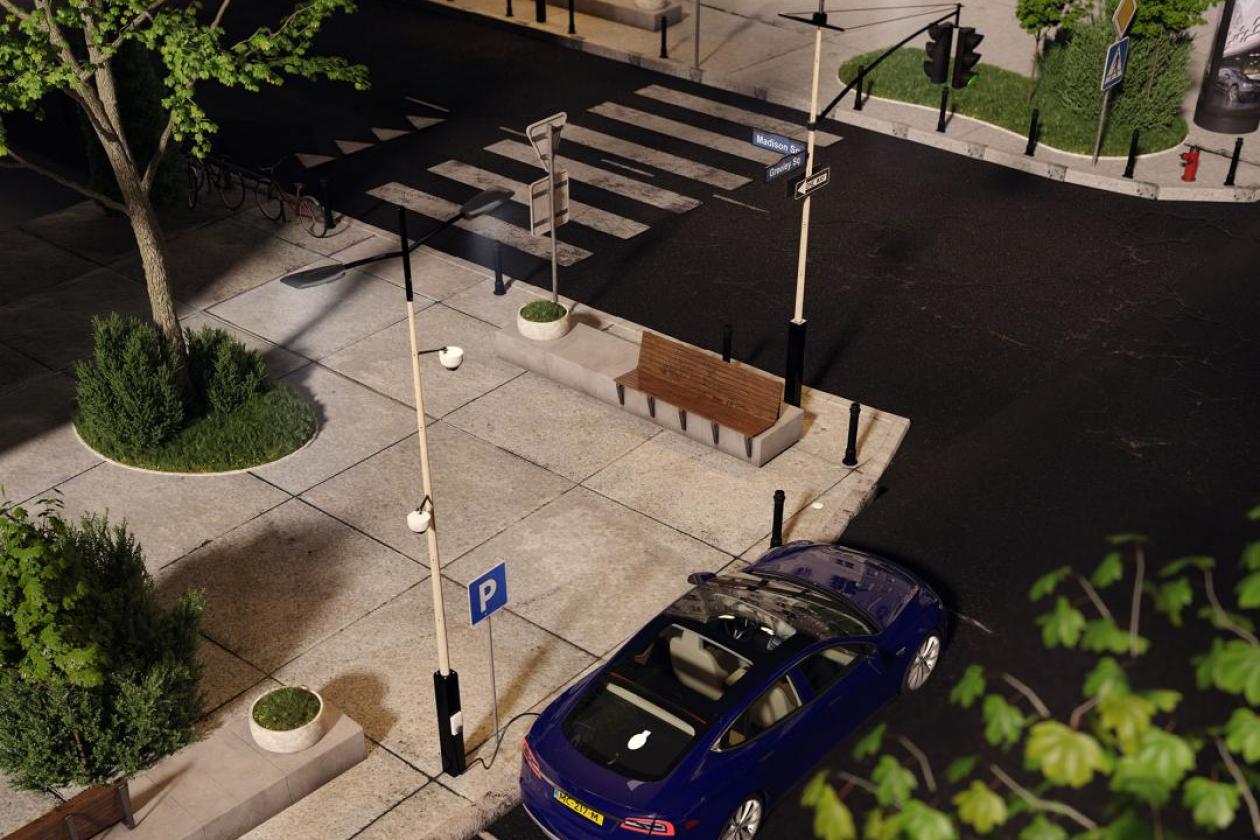‘Smart pole’ VDL Groep basis for international ecosystem
With the development and production of a new ‘smart pole’, VDL Groep is the initiator of a new international ecosystem. This partnership responds in a socially responsible and intelligent way to the increasing demand for charging and metering infrastructure and sustainability in public spaces. VDL’s smart pole consists of several types and can be constructed with different options for connectivity from various brands and solutions. This provides maximum flexibility to customers.
The idea for this open system arose when it became clear that the future streetscape would be ‘polluted’ by a proliferation of various light and communication poles. At the time, the energy transition was still in its infancy, but it was clear the need for a single pole that can also provide public space with a variety of functionalities will increase. This includes LED
lighting, charging options for vehicles, communication (WiFi and data collection), sensors that measure air quality, noise and/or traffic movements, and signage.
Open system
Based on the VDL philosophy of strength through cooperation, the poles have been designed with the basic principle that different suppliers can supply the various functionalities. An additional advantage is that new innovations and connectivity options can also be added to the pole at a later date. In this way, the poles can ‘grow’ with tomorrow’s ‘smart public environment’. As the largest pole and mast manufacturer of the Netherlands, VDL Groep will produce the smart pole. ‘With this ecosystem, we are making an important contribution to creating an optimal liveable urban environment in which sustainability and corporate social responsibility are the main principles,’ says managing director Eric Janssen of VDL Mast Solutions in Oss.
Maximum freedom of choice
‘This “open smart mast ecosystem” helps to make connections with maximum freedom of choice of services/brands and forms of collaboration,’ says Petra Claessen, CEO of BTG (the trade association for major users of telecommunications). ‘It is precisely this independent but important role for facilitating facilities that gives the city a future and sustainable infrastructure.’
New technology in public space
‘To make our cities more liveable, sustainable and beautiful, new technology is being introduced into our public space,’ says programme director Leonie van den Beuken of Amsterdam Smart City. ‘These technologies also have to look good, match the street scene and are installed only in places where they really add something. So multifunctional and for permanent use. In such a way that the government and various market parties can develop and use it together, instead of each individually. These poles are just that: beautiful, multifunctional and inviting for collaboration.’
Multiple types of smart poles
A specific composition may be required for each specific situation in the public space. Four variants have been designed to meet this need. This ranges from a standard light pole with limited connection options to a 25-metre-high mast with full connection options. Examples include the 5G network up to a drone nest in which a drone monitors the condition of, for example, a bridge or track.
Ecosystem partners
To accelerate climate objectives, among other things, a multidisciplinary collaboration is required, with room for today’s and tomorrow’s technical applications. This approach is supported by all partners (including ABB, ACiiST, Microsoft, Signify and Spie) with specialisations in solutions such as charging, connectivity, metering, lighting and digital aspects for the system. This creates a joint solution for the challenge that governments, as owners of the public space, face.

